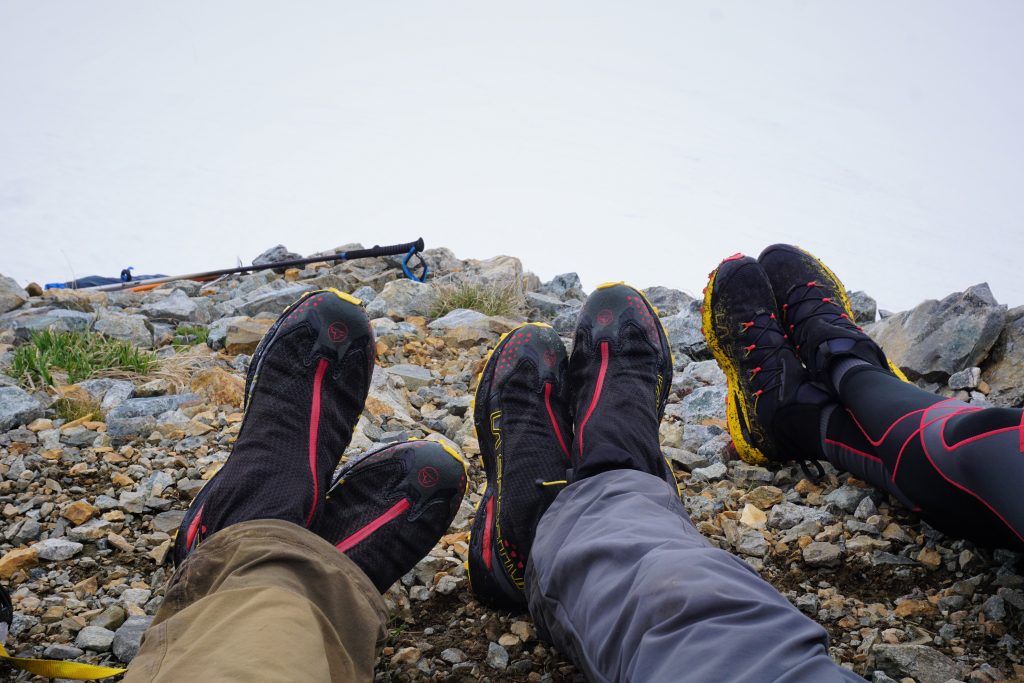Choosing Footwear for Different Terrain Types

The right pair of hiking shoes can make or break your outdoor adventure. While many hikers understand the importance of features like waterproofing or breathability, many overlook a crucial consideration: matching your footwear to the specific terrain you'll be traversing. Different landscapes demand different features from your hiking shoes, and making the right choice can significantly impact your comfort, safety, and overall experience on the trail.
Why Terrain-Specific Footwear Matters

When you step onto a trail, your feet become your primary connection to the earth beneath you. Each type of terrain presents unique challenges:
- Rocky paths demand protection and stability
- Muddy trails require exceptional traction
- Sandy terrain calls for breathability and debris protection
- Forest floors with roots and obstacles need ankle support and protection
- Stream crossings benefit from quick-drying materials
As we explored in our article on key features to look for in men's light hiking shoes, certain footwear characteristics become more or less important depending on where you're hiking. Let's break down how to match your footwear to specific terrain types for optimal performance and comfort.
Rocky Terrain: Protection and Stability

The Challenges
Rocky trails, whether boulder fields, scree slopes, or just paths with frequent stone obstacles, present specific challenges:
- Sharp edges that can penetrate inadequate outsoles
- Uneven surfaces that twist ankles
- Hard impacts that fatigue feet quickly
- Abrasive surfaces that wear down shoes
Ideal Footwear Features
For rocky terrain, prioritize these features when selecting from our men's light hiking shoes collection:
Robust Rock Plates
These protective inserts shield your feet from sharp rocks and reduce foot fatigue from repetitive impact. Located between the outsole and midsole, rock plates prevent stone bruising while maintaining necessary flexibility.
Reinforced Toe Caps
Rocky terrain increases the likelihood of toe strikes. A sturdy rubber toe cap prevents painful encounters with rocks and extends the life of your footwear by protecting this high-wear area.
Vibram or Equivalent Premium Outsoles
Higher-density rubber compounds resist abrasion from rough surfaces while providing exceptional grip on bare rock. Look for multi-directional lugs with specific edging zones for technical terrain.
Supportive Midsoles
As highlighted in our discussion of the importance of arch support in hiking shoes, proper support becomes even more critical on rocky terrain. The constant adjustment to uneven surfaces demands midsoles that stabilize your foot while providing adequate cushioning.
Muddy and Wet Conditions: Traction and Water Management
The Challenges
Muddy trails create a unique set of demands:
- Slippery surfaces that compromise stability
- Clogging of outsole lugs reducing traction
- Persistent moisture affecting foot comfort
- Added weight from mud accumulation
Ideal Footwear Features
When facing muddy conditions, look for these specialized features:
Deep, Widely-Spaced Lugs
Outsoles with deep, aggressive tread patterns (6mm+) bite into soft ground for superior traction. Wide spacing between lugs allows mud to clear with each step rather than accumulating.
Self-Cleaning Outsole Designs
Some advanced outsole patterns are specifically engineered to shed mud through flex channels and strategic lug placement, maintaining traction throughout your hike.
Quick-Draining Materials
Shoes designed for wet conditions typically feature mesh panels or drainage ports that allow water to escape quickly. When combined with quick-drying synthetic materials rather than waterproof membranes, these shoes manage moisture more effectively in consistently wet environments.
Gusseted Tongues
This design feature prevents mud and debris from entering through the lace area, keeping your feet cleaner and more comfortable on muddy trails.
Desert and Sandy Terrain: Heat Management and Sand Protection

The Challenges
Desert hiking presents distinct challenges:
- Excessive heat transfer through the outsole
- Sand intrusion causing discomfort and blisters
- Abrasive particles accelerating shoe wear
- Limited traction on loose surfaces
Ideal Footwear Features
For desert hiking, prioritize these elements:
Breathable Upper Materials
Desert conditions demand excellent ventilation. Look for engineered mesh uppers that allow heat to escape while providing sufficient structure. Understanding different materials used in light hiking shoes becomes particularly important in these conditions.
Gaiters or Built-In Debris Collars
Sand intrusion is a constant challenge in desert environments. Many desert-specific hiking shoes feature integrated gaiter attachments or debris collars that create a barrier against fine particles.
Heat-Resistant Midsoles
The ground temperature in desert environments can exceed 150°F (65°C). Quality hiking shoes for hot conditions incorporate midsole materials that insulate against this extreme heat transfer.
Closed-Cell Foam Insoles
Unlike open-cell foams that can trap sand particles, closed-cell foam insoles provide a smoother surface that prevents abrasive damage to your feet from trapped sand.
Forest and Root-Covered Trails: Flexibility and Protection

The Challenges
Forest trails with roots, fallen branches, and natural obstacles present unique demands:
- Trip hazards requiring precise foot placement
- Sudden changes in terrain texture
- Potentially slippery surfaces when wet
- Hidden obstacles beneath leaves or vegetation
Ideal Footwear Features
For navigating forest environments, consider these features:
Flexible Forefoot
Forest trails require adaptability as your foot encounters various surface types. A shoe with appropriate forefoot flexibility allows your foot to conform to roots and other obstacles.
Puncture-Resistant Materials
Hidden sticks, thorns, and sharp plant matter can penetrate inadequate shoes. Look for densely woven upper materials or protective overlays that prevent intrusions.
Multi-Directional Traction Patterns
Forest floors often combine multiple surface types, from slick roots to soft soil. Outsoles with varied lug patterns provide versatile grip across these changing conditions.
Moderate Ankle Support
While full ankle coverage isn't always necessary, some additional collar height can prevent unexpected twists when navigating uneven root systems.
Alpine and Mixed Terrain: Versatility and Protection
The Challenges
Alpine environments often combine multiple terrain types:
- Rapid transitions between rock, snow, and soil
- Extreme weather changes
- Technical sections requiring precise foot placement
- Extended exposure to harsh elements
Ideal Footwear Features
For alpine adventures, look for:
Weather-Adaptable Materials
Alpine conditions can change rapidly. Shoes with water-resistant treatments or selective waterproof zones balance protection with breathability for these variable conditions.
Crampon Compatibility
Even summer alpine routes may require crossing snow patches. Some men's light hiking shoes offer compatibility with lightweight traction devices for added versatility.
Durable Construction
Alpine terrain accelerates wear on footwear. Reinforced stitching, welded seams, and abrasion-resistant materials extend shoe life in these demanding conditions.
Balanced Support-to-Weight Ratio
Alpine terrain demands footwear that balances necessary protection with weight considerations, as faster, lighter travel is often safer in changing mountain conditions.
Making Your Final Selection
When choosing hiking footwear for specific terrain, consider these practical steps:
- Identify your primary terrain type - While many hikes include varied terrain, determine which surface you'll encounter most frequently.
- Consider seasonal variations - The same trail can present different challenges depending on the season. Summer trails might be dry and firm, while spring conditions might be muddy and slippery.
- Account for your pack weight - Heavier loads require more supportive footwear regardless of terrain type.
- Test before committing - Whenever possible, test shoes on terrain similar to what you'll be hiking. Many outdoor retailers offer testing areas with varied surfaces.
- Prioritize fit above all else - Even the most terrain-appropriate shoe will cause problems if it doesn't fit your foot correctly.
Conclusion: The Right Shoe for the Right Terrain
While no single hiking shoe excels in every environment, understanding the unique demands of different terrain types helps you make informed decisions when selecting footwear. By matching shoe features to the specific challenges you'll face on the trail, you'll enhance your hiking experience through improved comfort, performance, and safety.
Remember that proper arch support remains important across all terrain types, and understanding the materials used in light hiking shoes can help you evaluate how different models will perform in your target environment.
Ready to find terrain-specific hiking footwear for your next adventure? Browse our selection of men's light hiking shoes designed to perform across a variety of challenging landscapes.





